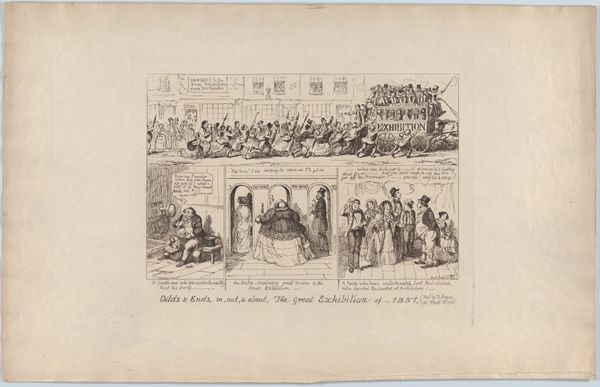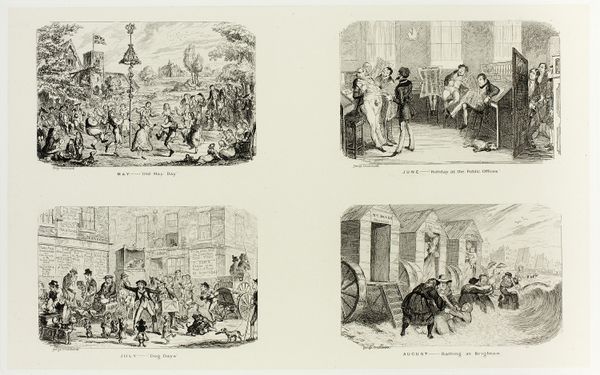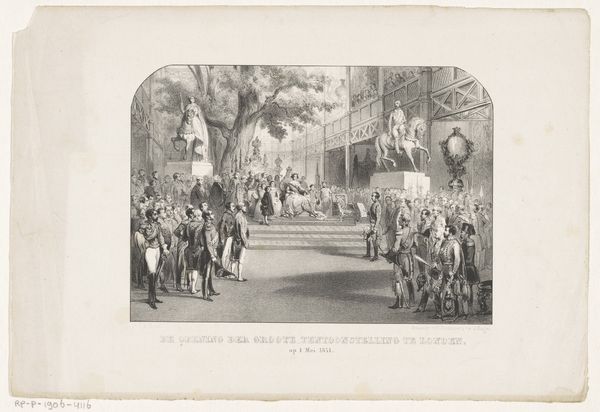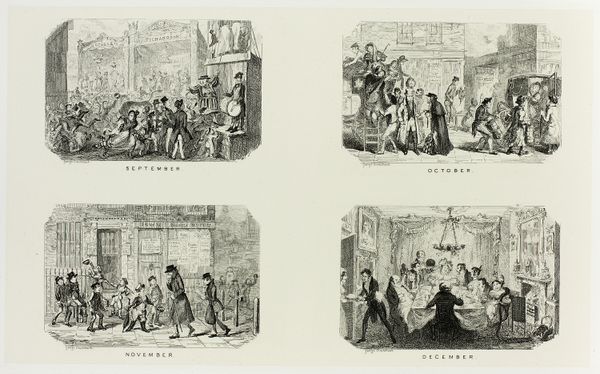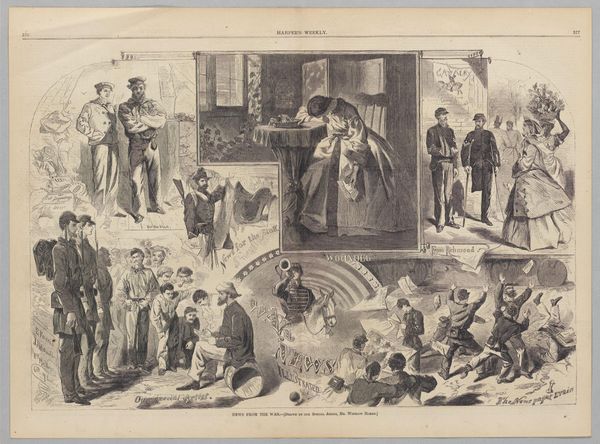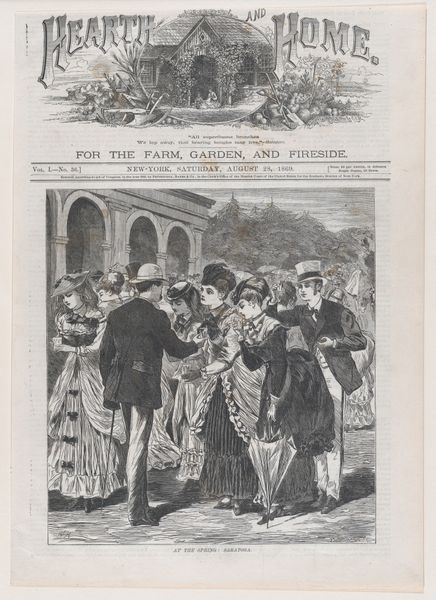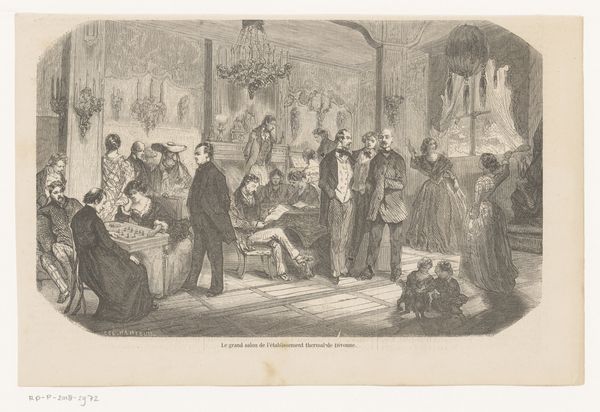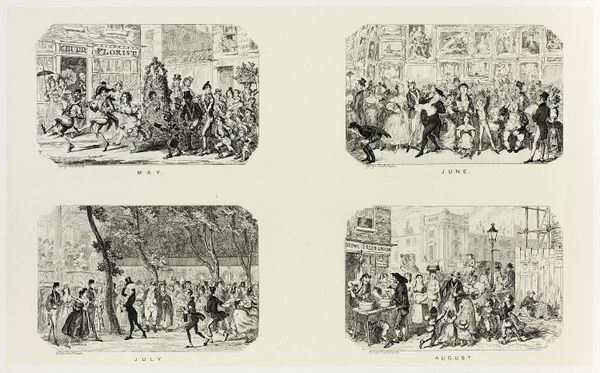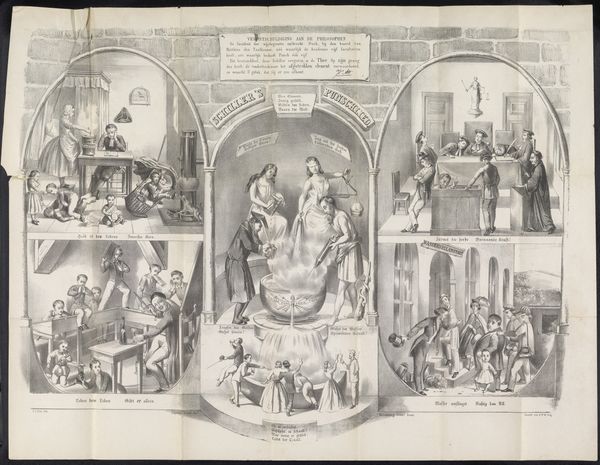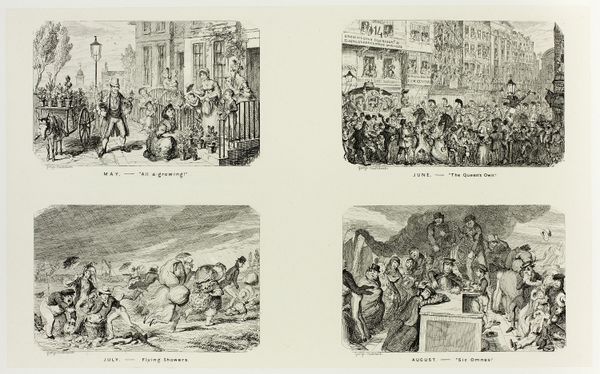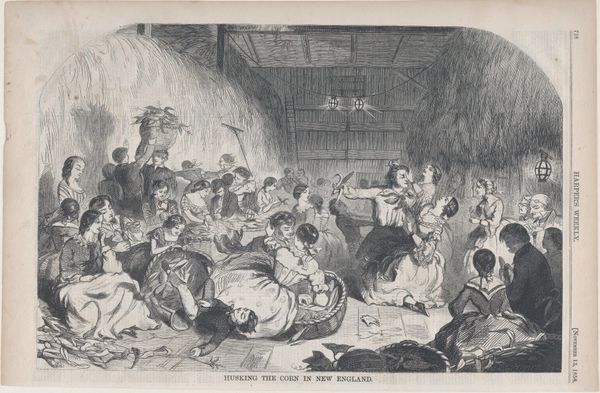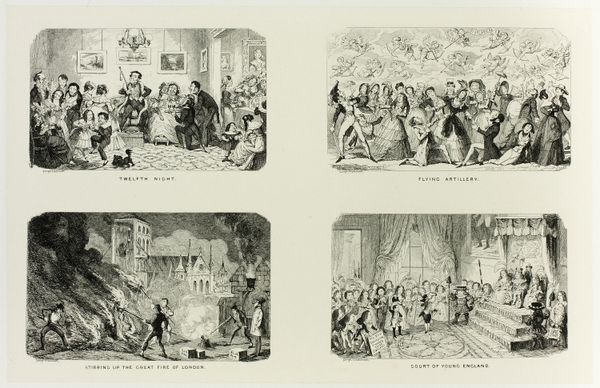
drawing, print, ink, pen, engraving
#
drawing
#
narrative-art
# print
#
caricature
#
ink
#
pen
#
genre-painting
#
engraving
Dimensions: height 260 mm, width 335 mm
Copyright: Rijks Museum: Open Domain
Curator: This engraving, "Spotprent over de afschaffing van kermissen," created in 1887, captures a specific socio-political sentiment. Editor: Immediately, I'm struck by the stark contrast—it's bisected, almost a before-and-after image. The composition, with its two distinct scenes framed by archways, creates a dramatic visual tension. Curator: Indeed. It presents a critical perspective on the ban of public fairs. On the left, we see a composed, orderly kermis scene presided over by a stern figure—presumably, law enforcement. Contrastingly, the right panel shows utter chaos: brawls, overturned benches, a clear breakdown of order following this said abolishment. Editor: The lines themselves seem to reflect this contrast! The left panel uses precise, almost delicate lines, conveying control and restraint, whereas the right side appears more frantic and chaotic, with looser linework enhancing the sense of upheaval. It is very dynamic in that right part! Curator: Precisely! This reflects the argument that eliminating spaces for public festivity leads not to moral improvement, but to suppressed disorder erupting elsewhere. Notice the placement of the "Bureau de Police" signs within both frames; it implies an inherent need for such governing forces— regardless of a festival taking place. Editor: You’re right! The semiotic play here, it suggests authority finds another way to exist, good or bad. What strikes me even further is the contrast created with dark vs. light! The kermis scene is lighter, airy, almost peaceful. In comparison, the latter chaotic side almost looks as if its darkness is all consuming— engulfing its inhabitants! Curator: It’s an incredibly loaded piece, ripe with social commentary of that time. It asks what happens when authorities try to sanitize recreation. Does one simply take all of its participants—or all they offer? Editor: Looking closer, it makes me think that even those precise lines in that former controlled panel hide some level of contempt with the figures that were governing it to begin with! Curator: Absolutely, the artist doesn’t appear to champion either outcome—simply expose an issue to question the established narrative. Editor: Quite! It challenges our idea about social progress as any one linear goal. Food for thought in even today’s context.
Comments
No comments
Be the first to comment and join the conversation on the ultimate creative platform.
